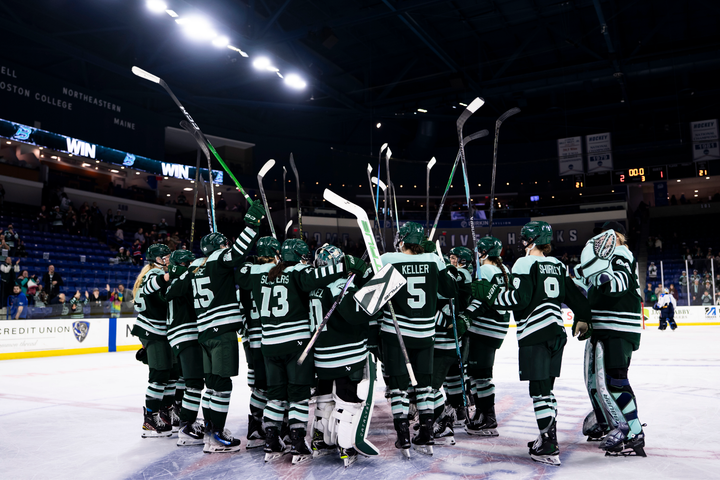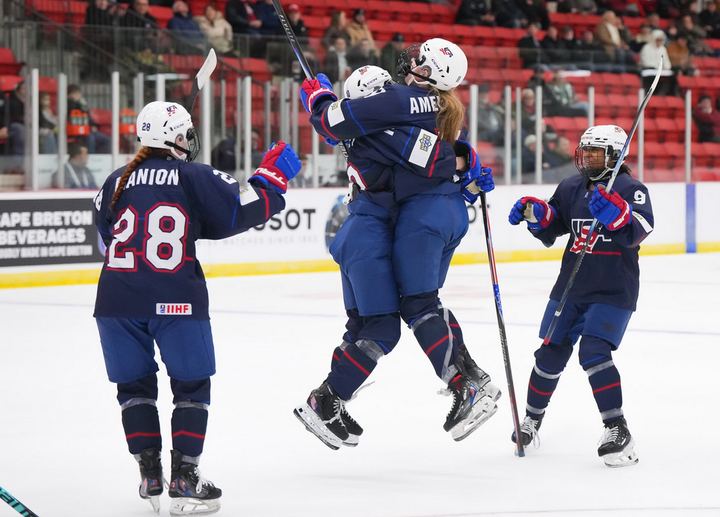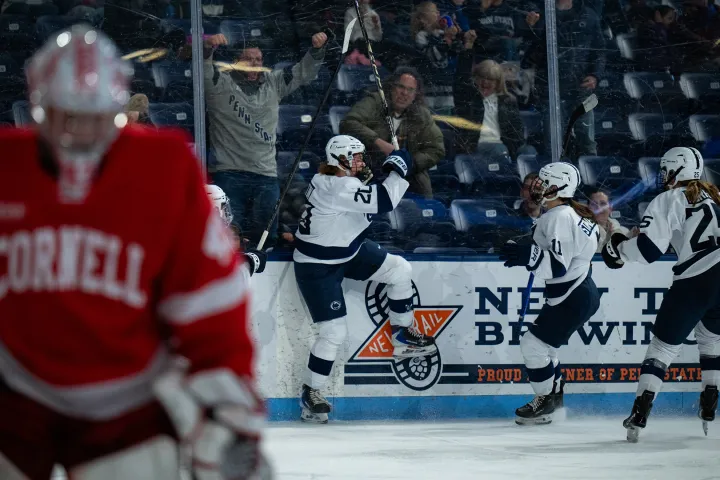Online interest in women’s hockey has risen since CWHL announced its closure
Search engine interest in the CWHL skyrocketed — after it folded
According to Google Trends, online interest in the CWHL jumped significantly in the days after the league announced that it would soon cease operations. While it makes sense that this major news event would attract a fair amount of media attention and generate more searches, it’s interesting to see that this news garnered more interest than any other CWHL event in the past year.
The chart below shows the worldwide search interest relative to the highest point for the given time period, which in this case is from April 27, 2018, to April 27, 2019. A value of 100 is the peak popularity for the term, and all other values are based off of that.
From this chart, we can see that the 2019 All-Star game in January drew less than a quarter of the same interest that the closure announcement did. The time period that includes the Calgary Inferno’s Clarkson Cup win generated only 19% as much interest as the closure.
All this to say people seem to care a lot more about the league now that it’s gone, which can be frustrating for those who have followed the league for a long time. Would the league have succeeded if more media attention had been directed at it before it folded? It’s complicated enough that it’s hard to say, but more attention during its time in operation certainly wouldn’t have hurt.
Media attention instead tended to focus on possibilities for the future, and the #OneLeague debate was the center of that. It seems like everyone who’s anyone in sports media has put their two cents in about the one league situation. CBC did an article, as did The Athletic, and even ESPN threw their hat into the ring.
Somehow, even now that one league has finally come to be, news outlets can’t seem to stop writing about it. Among others, the Vancouver Sun and The New York Times have written about the topic since the CWHL’s announcement. And yes, even The Ice Garden has provided some of that Premier™ #OneLeague content, which you can read below.
Related
The legal reality of #OneLeague
The one league problem has generated interest and engagement in professional women’s hockey for years. That being said, focusing solely on this topic alone draws attention away from the actual content of the leagues itself. A lack of substantive media coverage about all aspects of the sport limits the full potential of existing leagues to bring in new fans and grow the game, especially when the coverage implies that the only newsworthy aspect of women’s hockey is whether it can “survive” or not.
The one bright side of public debate about the new reality of professional women’s hockey, however, is that this increased media attention has also spilled over to the NWHL. Google’s analytics for “NWHL” as a search term show a similar jump in interest on March 31. It seems that many people who read news about the CWHL’s closure also were curious enough to research the NWHL as well. Although this spike was temporary, interest has trended up slightly since then.
Additionally, location-based data shows where people searched the most about the NWHL during this yearlong period. In this map, a value of 100 is indicative of the location with the most popularity as a fraction of total searches in that location.
From this, we can learn that while the largest proportion of search interest in the NWHL came from Canadian users, a fair amount of interest came from Finnish users as well. While this can partially be attributed to interest generated during the recent Worlds in Espoo, a closer look at the year’s search trends shows that interest actually peaked at the beginning of October, as shown below.
The most likely cause of this climax was Finnish goaltender Meeri Räisänen signing with the Connecticut Whale, which was announced on Oct. 1. It follows that citizens of her home country were curious about where their fellow Finn was playing during the upcoming season.
It’s also interesting that Canada and not the United States led the interest in the NWHL during the period, although a closer look at the data reveals that that interest was relatively low until a huge peak during the period that included the CWHL closure announcement. In particular, interest peaked on April 2, when the NWHL announced that it will add teams in Toronto and Montréal.
Related
NWHL to add two Canadian teams, receives further investment from NHL
It’s hard to see this spike in interest as an entirely good thing, considering what caused it. Everyone who called for one league got what they wanted, but it came at the expense of 150 players losing their jobs — along with countless coaches, management, and other staff.
That being said, more people are paying attention to, or at least getting curious about, professional women’s hockey in North America. All press may not be good press, and while it’s too late for this attention to help the CWHL, this is certainly a major opportunity for the sport.





Comments ()